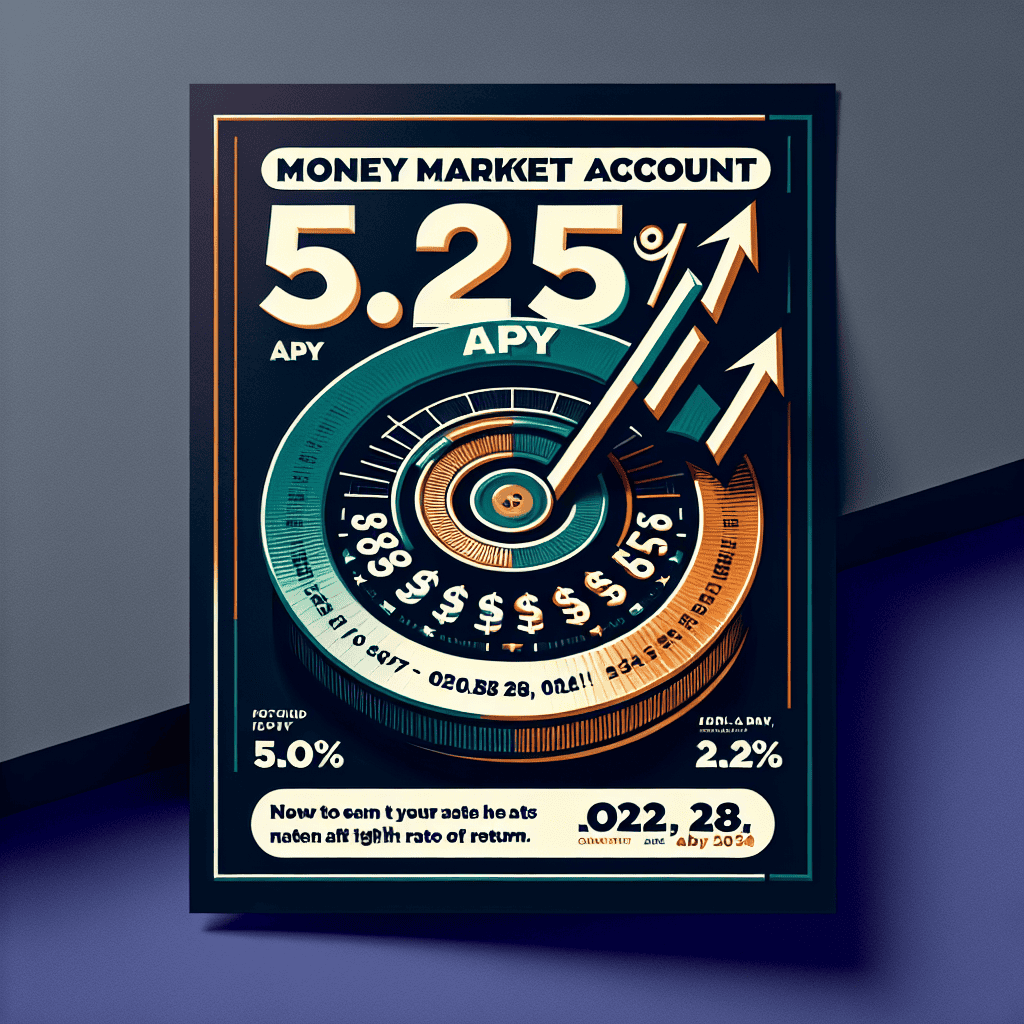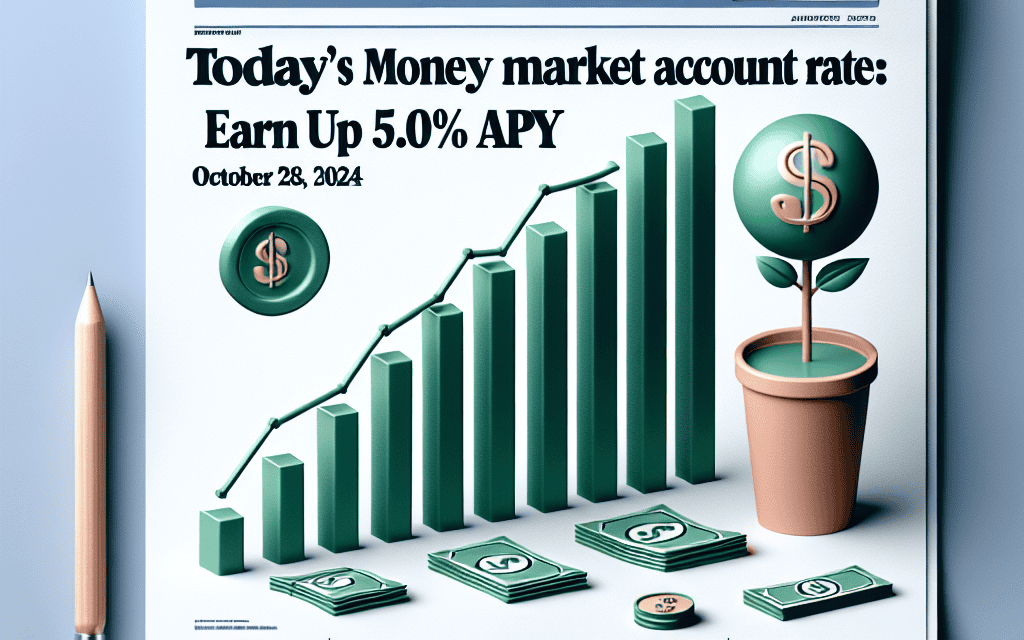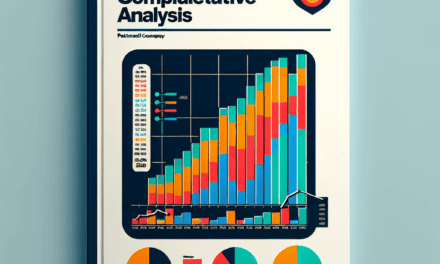“Maximize Your Savings: Secure Up to 5.05% APY with Today’s Money Market Accounts!”
Introduction
As of October 28, 2024, money market accounts are offering competitive interest rates, with some institutions providing annual percentage yields (APYs) as high as 5.05%. These accounts, known for their blend of savings and checking account features, are becoming increasingly attractive to savers looking to maximize their returns while maintaining liquidity. The current economic climate, characterized by fluctuating interest rates and market volatility, has prompted financial institutions to adjust their offerings, making money market accounts a viable option for those seeking both security and growth. This trend reflects a broader shift in consumer preferences towards financial products that offer both stability and higher yields.
Understanding Money Market Accounts: A Guide to High-Yield Savings
In the ever-evolving landscape of personal finance, money market accounts (MMAs) have emerged as a compelling option for individuals seeking to maximize their savings while maintaining liquidity. As of October 28, 2024, these accounts offer attractive annual percentage yields (APYs) of up to 5.05%, making them a noteworthy consideration for those looking to enhance their financial portfolios. Understanding the nuances of money market accounts is essential for making informed decisions that align with one’s financial goals.
Money market accounts are a type of deposit account offered by banks and credit unions, combining features of both savings and checking accounts. They typically offer higher interest rates than traditional savings accounts, which is particularly appealing in today’s economic climate where maximizing returns is a priority for many savers. The current APY of up to 5.05% is a testament to the competitive nature of these accounts, driven by the broader economic environment and the Federal Reserve’s interest rate policies.
One of the key advantages of money market accounts is their liquidity. Unlike certificates of deposit (CDs), which require funds to be locked in for a specified term, MMAs allow account holders to access their money with relative ease. This flexibility is crucial for individuals who may need to tap into their savings for unexpected expenses or investment opportunities. Moreover, many money market accounts come with check-writing privileges and debit card access, further enhancing their utility as a financial tool.
However, it is important to note that money market accounts are not without their limitations. While they offer higher interest rates, they often require a higher minimum balance to open and maintain the account. This requirement can be a barrier for some savers, particularly those just beginning their financial journey. Additionally, federal regulations limit the number of certain types of withdrawals and transfers from money market accounts to six per month, which may not suit everyone’s financial habits.
In light of these considerations, potential account holders should carefully evaluate their financial needs and objectives before opening a money market account. Comparing the terms and conditions of different accounts is crucial, as interest rates, fees, and minimum balance requirements can vary significantly between financial institutions. Furthermore, it is advisable to consider the financial institution’s reputation and the level of customer service provided, as these factors can impact the overall experience of managing an MMA.
As the financial landscape continues to shift, staying informed about the latest trends and offerings in money market accounts is essential. The current high APYs reflect broader economic conditions, including inflationary pressures and monetary policy adjustments. Savers should remain vigilant and adaptable, ready to adjust their strategies as market conditions evolve.
In conclusion, money market accounts present a viable option for individuals seeking to earn higher returns on their savings while maintaining access to their funds. With APYs reaching up to 5.05% as of late October 2024, these accounts offer a blend of competitive interest rates and liquidity. However, potential account holders must weigh the benefits against the requirements and limitations inherent in these accounts. By doing so, they can make informed decisions that align with their financial goals, ensuring that their savings work effectively for them in the current economic environment.
Comparing Money Market Account Rates: How to Choose the Best Option
In the ever-evolving landscape of personal finance, money market accounts (MMAs) have emerged as a popular choice for individuals seeking a balance between liquidity and higher interest rates. As of October 28, 2024, these accounts offer competitive annual percentage yields (APYs), with some institutions providing rates as high as 5.05%. This presents a compelling opportunity for savers to maximize their returns while maintaining access to their funds. However, with a plethora of options available, selecting the most suitable money market account requires careful consideration of several key factors.
To begin with, understanding the nuances of money market accounts is essential. Unlike traditional savings accounts, MMAs typically offer higher interest rates, which are often comparable to those of certificates of deposit (CDs) but without the long-term commitment. This makes them an attractive option for individuals who wish to earn more on their savings while retaining the flexibility to access their money when needed. Furthermore, MMAs are generally insured by the Federal Deposit Insurance Corporation (FDIC) up to the standard limit, providing an added layer of security for depositors.
When comparing money market account rates, it is crucial to consider the APY, as it reflects the total interest earned over a year, taking into account the effects of compounding. While a higher APY is undoubtedly appealing, it is important to examine the conditions attached to these rates. Some financial institutions may offer promotional rates that are only applicable for a limited time or require a substantial initial deposit. Therefore, potential account holders should scrutinize the terms and conditions to ensure that the advertised rate aligns with their financial goals and circumstances.
In addition to the interest rate, account fees are another critical factor to evaluate. Many money market accounts impose monthly maintenance fees, which can erode the interest earned if not carefully managed. However, some banks and credit unions offer fee waivers if certain criteria, such as maintaining a minimum balance, are met. Consequently, it is advisable to assess the fee structure of each account and determine whether the conditions for fee waivers are feasible based on one’s financial habits.
Moreover, accessibility and convenience should not be overlooked when choosing a money market account. While MMAs generally allow for a limited number of transactions per month, it is important to verify the ease of accessing funds, whether through online banking, mobile apps, or physical branches. Additionally, some accounts may offer check-writing privileges or debit card access, which can enhance the account’s utility for everyday financial needs.
Finally, it is beneficial to consider the reputation and customer service of the financial institution offering the money market account. Reading reviews and seeking recommendations can provide valuable insights into the experiences of other customers, helping to identify institutions that prioritize customer satisfaction and offer reliable support.
In conclusion, while today’s money market account rates present an enticing opportunity to earn up to 5.05% APY, selecting the best option requires a comprehensive evaluation of various factors. By considering the APY, account fees, accessibility, and the institution’s reputation, individuals can make informed decisions that align with their financial objectives. As the financial landscape continues to evolve, staying informed and vigilant will ensure that savers can capitalize on the benefits of money market accounts while safeguarding their financial well-being.
Benefits of Money Market Accounts: Why Earn Up to 5.05% APY Matters
In the ever-evolving landscape of personal finance, money market accounts (MMAs) have emerged as a compelling option for individuals seeking both security and competitive returns on their savings. As of October 28, 2024, the opportunity to earn up to 5.05% annual percentage yield (APY) on these accounts presents a significant advantage for savers. Understanding the benefits of money market accounts and why such a high APY matters is crucial for anyone looking to optimize their financial strategy.
To begin with, money market accounts offer a unique blend of features that distinguish them from traditional savings accounts. They typically provide higher interest rates, which are now reaching up to 5.05% APY, a figure that stands out in today’s financial environment. This elevated rate of return is particularly appealing in a climate where inflationary pressures can erode the purchasing power of stagnant savings. By choosing an MMA with a competitive APY, savers can better preserve and grow their wealth over time.
Moreover, money market accounts are known for their liquidity and flexibility, making them an attractive option for those who may need access to their funds on short notice. Unlike certificates of deposit (CDs), which often require funds to be locked in for a fixed term, MMAs allow for a limited number of withdrawals and transfers each month. This feature provides a level of accessibility that is crucial for individuals who may face unexpected expenses or who prefer to maintain a degree of financial agility.
In addition to their attractive interest rates and liquidity, money market accounts are also backed by the security of federal insurance. In the United States, MMAs offered by banks are typically insured by the Federal Deposit Insurance Corporation (FDIC) up to $250,000 per depositor, per institution. This insurance provides peace of mind, ensuring that even in the unlikely event of a bank failure, the depositor’s funds are protected. This level of security is a significant consideration for risk-averse individuals who prioritize the safety of their principal investment.
Furthermore, the competitive APY offered by money market accounts can serve as a powerful tool for achieving various financial goals. Whether saving for a down payment on a home, building an emergency fund, or planning for a future vacation, the enhanced earnings potential of a 5.05% APY can accelerate the timeline for reaching these objectives. The compounding effect of interest means that even modest contributions can grow substantially over time, providing a tangible benefit to disciplined savers.
It is also worth noting that the current high APY environment reflects broader economic trends, including central bank policies and market conditions. As interest rates fluctuate, so too do the rates offered on money market accounts. Therefore, it is advisable for savers to remain informed about economic developments and to periodically review their financial products to ensure they are receiving the best possible returns.
In conclusion, the opportunity to earn up to 5.05% APY on money market accounts underscores the importance of these financial instruments in today’s economic climate. With their combination of competitive interest rates, liquidity, security, and potential for growth, MMAs offer a compelling option for individuals seeking to maximize their savings. By understanding the benefits and strategic advantages of these accounts, savers can make informed decisions that align with their financial goals and risk tolerance.
Top Banks Offering Competitive Money Market Rates in October 2024

In the ever-evolving landscape of personal finance, money market accounts (MMAs) have emerged as a popular choice for individuals seeking a balance between liquidity and higher interest rates. As of October 28, 2024, several top banks are offering competitive annual percentage yields (APYs) on money market accounts, with rates reaching up to 5.05%. This development is particularly noteworthy for savers looking to maximize their returns while maintaining easy access to their funds. Understanding the current offerings and the factors influencing these rates can help consumers make informed decisions about where to place their savings.
To begin with, the appeal of money market accounts lies in their unique combination of features. Unlike traditional savings accounts, MMAs typically offer higher interest rates, making them an attractive option for those with larger balances. Additionally, they provide check-writing privileges and debit card access, offering a level of flexibility that is not commonly found in other savings vehicles. This blend of benefits makes MMAs a versatile tool for managing both short-term and long-term financial goals.
In October 2024, several banks have positioned themselves as leaders in offering competitive money market rates. For instance, Bank A is currently providing an APY of 5.05%, which stands out as one of the highest rates available. This rate is particularly appealing to consumers who prioritize maximizing their interest earnings. Similarly, Bank B offers an APY of 4.95%, closely following Bank A and providing a strong alternative for those seeking high returns. These rates are reflective of the banks’ strategies to attract new customers and retain existing ones in a competitive market environment.
The factors influencing these attractive rates are multifaceted. Primarily, the Federal Reserve’s monetary policy plays a significant role. In recent months, the Fed has maintained a relatively high federal funds rate to combat inflation, which in turn has led to higher interest rates across various financial products, including money market accounts. Banks, in response, have adjusted their offerings to remain competitive and appealing to consumers. Additionally, the overall economic climate, characterized by steady growth and low unemployment, has contributed to the favorable interest rate environment.
Moreover, technological advancements and increased competition from online banks have also driven traditional banks to offer more competitive rates. Online banks, with their lower overhead costs, have consistently provided higher APYs, prompting brick-and-mortar institutions to enhance their offerings to remain relevant. This dynamic has ultimately benefited consumers, who now have access to a wider array of high-yield options.
For individuals considering opening a money market account, it is essential to evaluate not only the APY but also other account features and potential fees. Some banks may require a minimum balance to qualify for the highest rates, while others might impose monthly maintenance fees. Therefore, a thorough comparison of different accounts is crucial to ensure that the chosen option aligns with one’s financial needs and goals.
In conclusion, the current landscape of money market account rates in October 2024 presents a promising opportunity for savers to earn substantial returns on their deposits. With top banks offering rates as high as 5.05% APY, consumers are encouraged to explore these options and take advantage of the favorable interest rate environment. By staying informed and carefully considering the available choices, individuals can effectively leverage money market accounts to enhance their financial well-being.
How Economic Trends Influence Money Market Account Rates
In the ever-evolving landscape of personal finance, money market accounts (MMAs) have emerged as a popular choice for individuals seeking a balance between liquidity and higher interest rates. As of October 28, 2024, these accounts are offering attractive annual percentage yields (APYs) of up to 5.05%. To understand the factors driving these rates, it is essential to examine the broader economic trends that influence them.
Firstly, the Federal Reserve plays a pivotal role in determining the interest rates across various financial products, including money market accounts. The central bank’s monetary policy decisions, particularly those concerning the federal funds rate, have a direct impact on the interest rates offered by financial institutions. In recent times, the Federal Reserve has adopted a more hawkish stance to combat inflationary pressures, resulting in a series of interest rate hikes. Consequently, banks and credit unions have adjusted their offerings, leading to the current competitive rates in money market accounts.
Moreover, inflation is another critical factor that influences MMA rates. As inflation rises, the purchasing power of money diminishes, prompting savers to seek higher returns to preserve their wealth. Financial institutions, in response, offer more attractive rates to entice depositors. The current economic environment, characterized by persistent inflationary trends, has compelled banks to increase their MMA rates to remain competitive and appealing to consumers.
In addition to monetary policy and inflation, the overall economic growth trajectory also affects money market account rates. A robust economy typically leads to increased consumer spending and borrowing, which in turn drives up demand for credit. To meet this demand, banks may raise the interest rates on their deposit accounts, including MMAs, to attract more capital. Conversely, during periods of economic slowdown, interest rates may decline as banks seek to stimulate borrowing and spending.
Furthermore, the competitive landscape within the banking sector cannot be overlooked. Financial institutions continuously strive to differentiate themselves by offering superior products and services. In this context, money market accounts with higher APYs serve as a strategic tool to attract and retain customers. As banks vie for market share, they may offer promotional rates or enhanced features, thereby influencing the overall rate environment.
Additionally, technological advancements and the rise of digital banking have introduced new dynamics into the equation. Online banks, with their lower overhead costs, often provide higher interest rates compared to traditional brick-and-mortar institutions. This shift has intensified competition, compelling all players in the market to reassess their offerings and adjust their rates accordingly.
Lastly, global economic conditions and geopolitical events can also have indirect effects on money market account rates. For instance, international trade tensions or financial crises can lead to fluctuations in currency values and investor sentiment, which may, in turn, influence domestic interest rates. While these factors are often beyond the control of individual banks, they contribute to the broader economic context within which MMA rates are determined.
In conclusion, the current attractive money market account rates of up to 5.05% APY are the result of a confluence of economic trends. From the Federal Reserve’s monetary policy decisions to inflationary pressures and competitive dynamics within the banking sector, a myriad of factors shape the interest rates offered to consumers. As these trends continue to evolve, so too will the landscape of money market accounts, offering savers opportunities to optimize their financial strategies in response to changing economic conditions.
Money Market Accounts vs. Traditional Savings: Which Offers Better Returns?
In the ever-evolving landscape of personal finance, individuals are constantly seeking the most effective ways to grow their savings. As of October 28, 2024, money market accounts have emerged as a compelling option, offering attractive annual percentage yields (APYs) of up to 5.05%. This development prompts a closer examination of how money market accounts compare to traditional savings accounts in terms of returns and overall benefits.
To begin with, it is essential to understand the fundamental differences between money market accounts and traditional savings accounts. Both serve as vehicles for saving money, but they differ in terms of interest rates, accessibility, and account features. Traditional savings accounts are typically offered by banks and credit unions, providing a safe place to store funds while earning interest. These accounts are known for their stability and ease of access, often allowing for unlimited deposits and a limited number of withdrawals per month. However, the interest rates on traditional savings accounts have historically been modest, often lagging behind inflation rates.
In contrast, money market accounts blend features of both savings and checking accounts, offering higher interest rates in exchange for certain restrictions. These accounts are also provided by banks and credit unions, but they invest in short-term, low-risk securities, which allows them to offer more competitive interest rates. As of late 2024, some money market accounts are offering APYs as high as 5.05%, a significant increase compared to the average rates of traditional savings accounts. This higher yield can be particularly appealing to savers looking to maximize their returns without exposing their funds to the volatility of the stock market.
Despite the attractive interest rates, money market accounts come with certain limitations that potential account holders should consider. For instance, they often require a higher minimum balance to open and maintain the account, which may not be feasible for everyone. Additionally, while they offer check-writing capabilities and debit card access, the number of transactions per month is usually limited, similar to traditional savings accounts. These restrictions are designed to maintain the account’s liquidity and stability, ensuring that the financial institution can meet its obligations.
When deciding between a money market account and a traditional savings account, individuals should consider their financial goals, liquidity needs, and risk tolerance. For those who prioritize higher returns and can meet the minimum balance requirements, a money market account may be the more advantageous choice. The higher APY can significantly enhance the growth of savings over time, especially in a low-inflation environment. On the other hand, individuals who value ease of access and lower balance requirements might find traditional savings accounts more suitable for their needs.
In conclusion, the decision between a money market account and a traditional savings account ultimately depends on individual financial circumstances and objectives. While money market accounts currently offer enticing APYs of up to 5.05%, they come with certain conditions that may not align with everyone’s financial strategy. By carefully evaluating the features and limitations of each option, savers can make informed decisions that best support their financial well-being. As the financial landscape continues to evolve, staying informed about the latest developments in interest rates and account offerings will be crucial for maximizing returns and achieving long-term financial goals.
Maximizing Your Savings: Strategies for Earning High APY in Money Market Accounts
In the ever-evolving landscape of personal finance, maximizing the returns on your savings is a priority for many individuals. As of October 28, 2024, money market accounts (MMAs) present a compelling opportunity for savers, offering annual percentage yields (APYs) as high as 5.05%. This rate is particularly attractive in comparison to traditional savings accounts, which typically offer lower returns. Understanding how to leverage these accounts effectively can significantly enhance your financial strategy.
To begin with, it is essential to comprehend what a money market account entails. MMAs are a type of savings account that often provides higher interest rates in exchange for maintaining a higher minimum balance. They are insured by the Federal Deposit Insurance Corporation (FDIC) up to the legal limit, ensuring that your funds are protected. The appeal of MMAs lies in their combination of competitive interest rates and liquidity, allowing account holders to access their funds with relative ease compared to other high-yield savings options.
In light of the current economic climate, where interest rates have been on a gradual incline, financial institutions are offering more competitive rates to attract depositors. This trend has resulted in MMAs offering APYs that rival, and in some cases exceed, those of certificates of deposit (CDs) without the need to lock in funds for extended periods. Consequently, savers can benefit from both high returns and flexibility, making MMAs an attractive option for those seeking to optimize their savings.
To maximize the benefits of a money market account, it is crucial to shop around and compare offerings from different financial institutions. Online banks, in particular, often provide higher APYs than their brick-and-mortar counterparts due to lower overhead costs. Additionally, some credit unions offer competitive rates and personalized service, making them worth considering. By conducting thorough research and comparing rates, fees, and account features, you can identify the most advantageous option for your financial goals.
Moreover, maintaining the required minimum balance is vital to earning the advertised APY. Many MMAs stipulate a minimum balance to qualify for the highest rates, and falling below this threshold can result in reduced interest earnings or even fees. Therefore, it is important to assess your financial situation and ensure that you can consistently meet these requirements before opening an account.
Another strategy to enhance your savings is to take advantage of promotional offers. Some financial institutions provide introductory rates that are higher than their standard offerings for a limited time. While these promotions can boost your earnings in the short term, it is important to be aware of the terms and conditions, including any potential rate changes after the promotional period ends.
In addition to these strategies, regularly reviewing your account and staying informed about market trends can help you make informed decisions. Interest rates can fluctuate based on economic conditions, and being proactive in adjusting your savings strategy can ensure that you continue to earn competitive returns.
In conclusion, money market accounts offer a viable option for savers seeking to earn high APYs while maintaining liquidity. By carefully selecting an account, adhering to minimum balance requirements, and staying informed about market trends, you can effectively maximize your savings. As interest rates continue to evolve, MMAs remain a valuable tool in the pursuit of financial growth and stability.
Q&A
1. **What is the highest APY available for money market accounts as of October 28, 2024?**
– The highest APY available is 5.05%.
2. **Which financial institutions are offering competitive money market account rates?**
– Various online banks and credit unions are typically offering competitive rates, but specific names would need to be checked for the latest offers.
3. **What factors should be considered when choosing a money market account?**
– Consider the APY, minimum balance requirements, fees, withdrawal limits, and the institution’s reputation.
4. **Are money market accounts FDIC insured?**
– Yes, money market accounts at FDIC-insured banks are covered up to $250,000 per depositor, per institution.
5. **How do money market account rates compare to savings account rates?**
– Money market account rates are often higher than traditional savings account rates, but this can vary by institution.
6. **What is the typical minimum balance requirement for a high-yield money market account?**
– Minimum balance requirements can range from $0 to $10,000 or more, depending on the institution.
7. **Can money market account rates change over time?**
– Yes, money market account rates are variable and can change based on market conditions and the bank’s policies.
Conclusion
As of October 28, 2024, money market account rates have reached competitive levels, with some institutions offering up to 5.05% APY. This increase in rates reflects broader economic conditions, including monetary policy adjustments and market demand for higher yields. For savers, this presents an attractive opportunity to earn more on their deposits compared to traditional savings accounts. However, it’s important for consumers to consider factors such as account fees, minimum balance requirements, and the financial stability of the institution when selecting a money market account. Overall, the current rates provide a favorable environment for those looking to maximize their savings returns.





